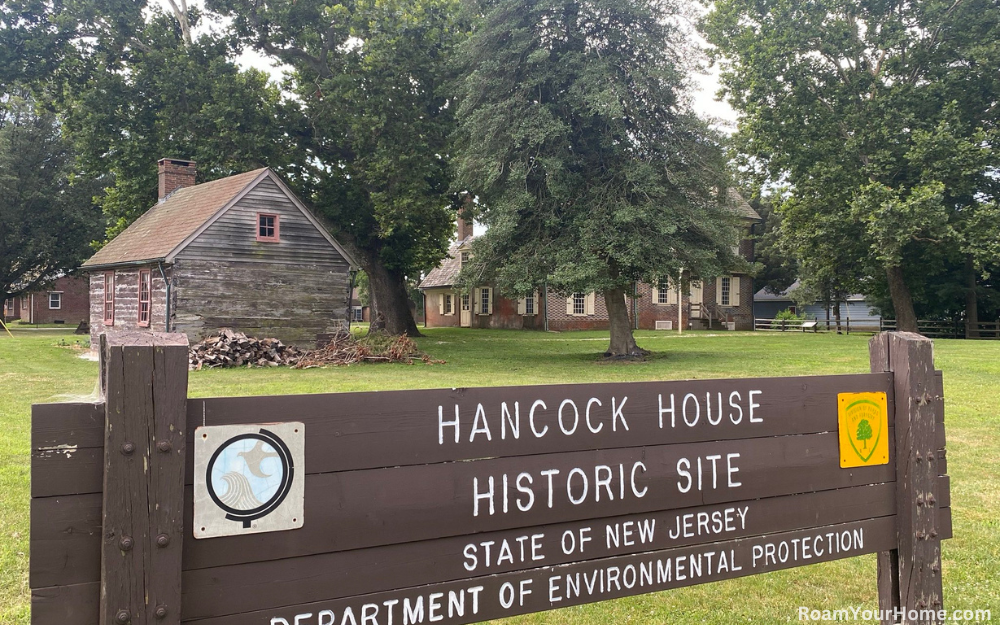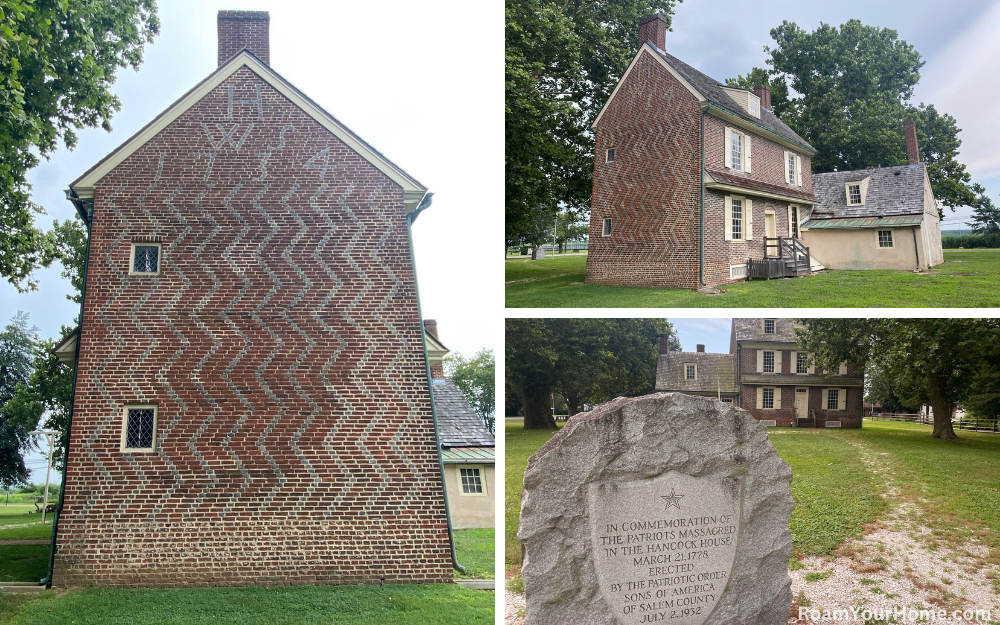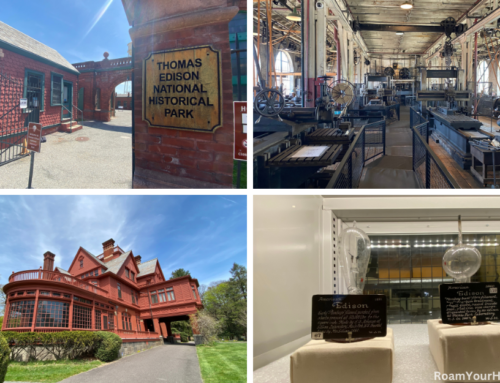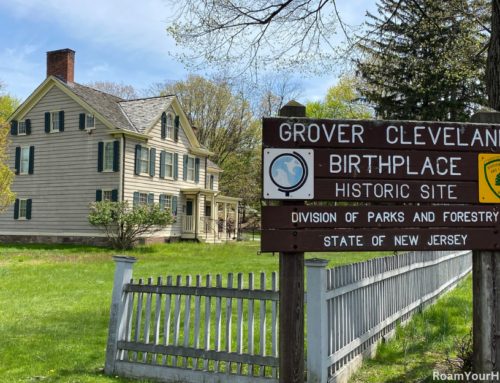
Hancock House Historic Site: A Revolutionary War Massacre
The Hancock House Historic Site is in southwest New Jersey near Wilmington and Philadelphia. The house was built in 1734 by Judge William and Sarah Hancock. The home has stood the test of time for nearly 300 years. Today, it is a protected site of a Revolutionary War massacre and an architectural gem.
When I pulled into the parking lot, I was the only car there and would remain the only car during my entire visit. It was a hot and particularly humid, sticky afternoon when I arrived. The site was smaller than expected, basically your average-sized home with a big lawn. I knew of the site’s war history but was surprised when I saw a sign explaining the brickwork.

Historic Brickwork
The Hancock House is a stunning example and one of the few remaining patterned brick homes that were once common in the area. While the home was being constructed, masons alternated red bricks laid lengthwise, called stretchers, with blue glazed bricks laid on end, called headers. The result is called Flemish Bond and looks like a checkerboard design. Walking around the home’s side to see it, I was immediately impressed with the artistry.
Gazing at the brickwork, it was still clear as day, which was the stretchers and headers. Towards the top, the blue headers were used to spell H W S 1734. H for Hancock, W for William, S for Sarah, the owners, and 1734 the year of construction.
Hancock House Revolutionary War Massacre Site
The Quaker Hancock Family would live in the home peacefully for the next four decades. When William passed in 1762, he left the house to his son and namesake, William. It was this William who would become a martyr to the revolutionary cause.
In the harsh winter of 1777, George Washington and the Continental Army were encamped at Valley Forge, Pennsylvania. The British Army occupied Philadelphia. Washington dispatched soldiers to forage for food in southern New Jersey. Quakers inhabiting the area were generally pacifists and opposed violence, but many still supported the cause. People living in the area had earlier sent a few hundred head of cattle to help Washington. A short time later, British General Charles Mawhood was sent to do the same. Mawhood and his Red Coats were not met amicably by the locals. The British quickly grew frustrated by the lack of loyalty to the crown and the local support of the continentals.
On March 20, 1778, Mawhood issued the following order to his British troops: “Go – spare no one – put all to death – give no quarters.” Within 24 hours, these orders would be carried out.
On March 21 at 5 a.m., approximately 300 Queen’s Rangers attacked the Hancock House upon hearing that local militia was stationed inside. Not a single shot was fired; everyone inside was given the bayonet. Ten were killed, and five were wounded, including William Hancock, who passed away several days later. It’s rumored that there are still blood stains in the attic where many of the men were killed.
The Hancock House remained in the family until 1931, when the State of New Jersey purchased it and opened it as a museum the following year. You can visit for free to this day.



